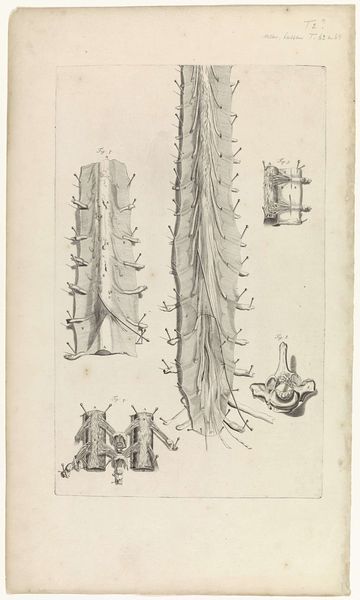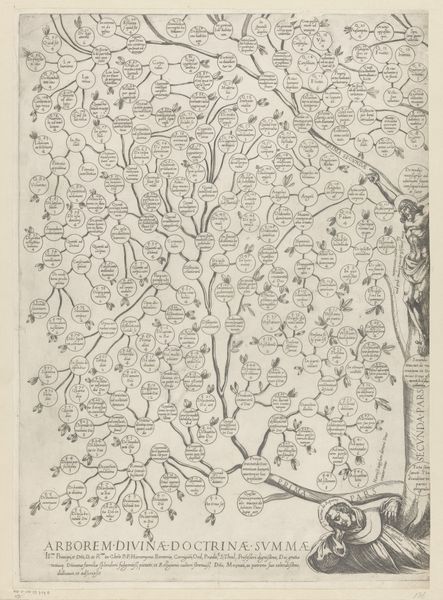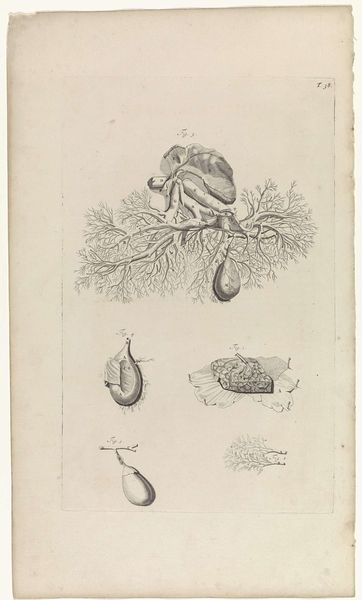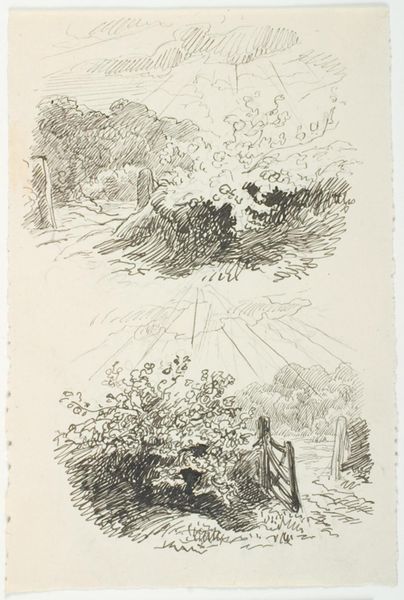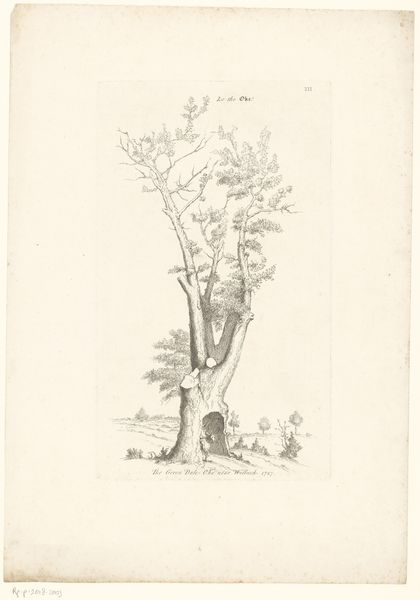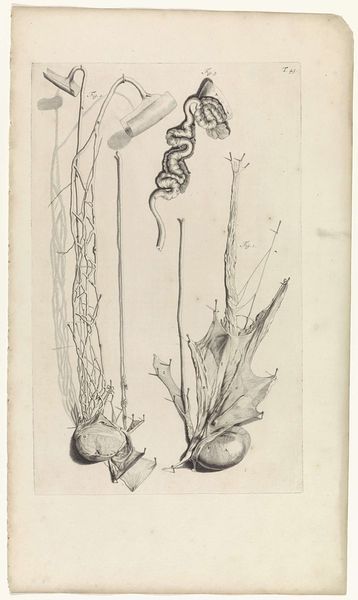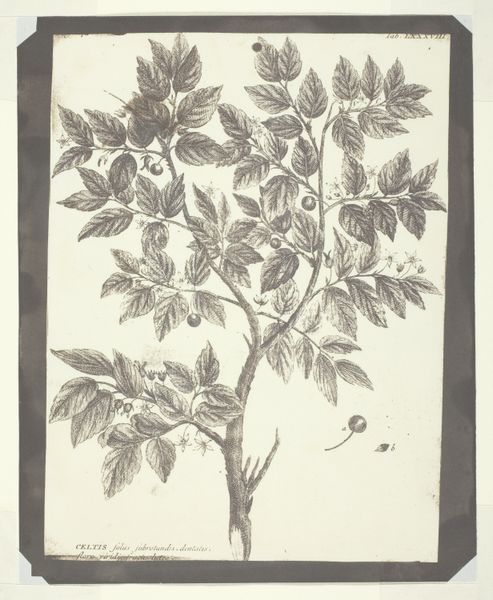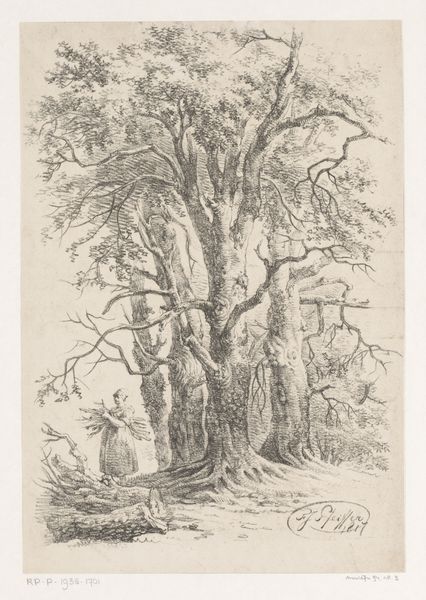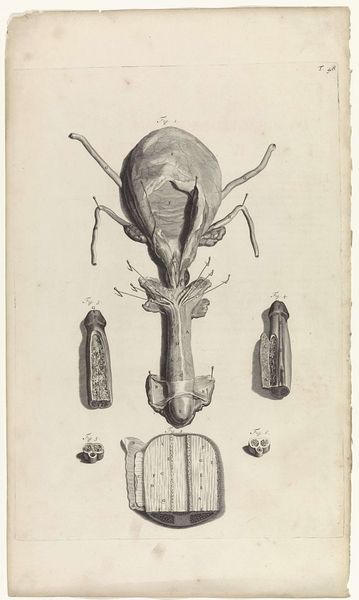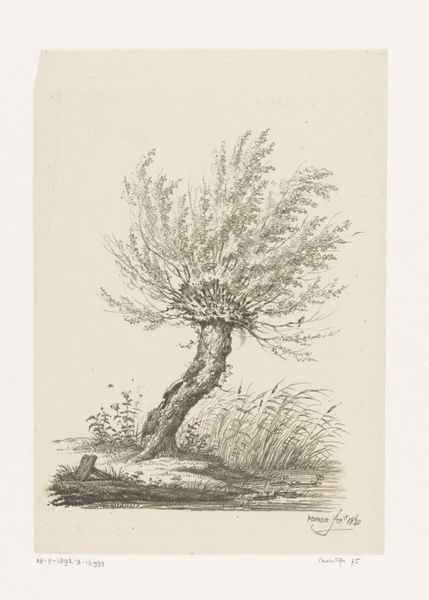
Anatomische studie van de luchtwegvertakkingen en de longblaasjes 1685
0:00
0:00
pietervangunst
Rijksmuseum
drawing, print, ink, engraving
#
drawing
#
narrative-art
#
baroque
# print
#
ink
#
geometric
#
history-painting
#
engraving
Dimensions: width 320 mm, height 464 mm
Copyright: Rijks Museum: Open Domain
Curator: Here at the Rijksmuseum, we have a drawing from 1685 by Pieter van Gunst, titled "Anatomische studie van de luchtwegvertakkingen en de longblaasjes", or "Anatomical study of the airway branches and alveoli." It’s rendered in ink through engraving. Editor: It's quite striking, in a rather macabre way. It reminds me of winter trees stripped bare, a stark beauty in the delicate linework. It has a surreal botanical quality. Curator: Precisely! Van Gunst masterfully utilized the print medium to create almost botanical illustrations. Think about it: engraving involved meticulously carving lines into a metal plate, inking it, and then pressing it onto paper. The finished result allows precise replication. It would have been very helpful to scientists. Editor: Yes, but focusing solely on production techniques risks overlooking other factors, I want to delve deeper into the composition. Note the symmetrical arrangement, the clear organization of different anatomical components – from larger bronchioles to those tiny alveoli. Each presented as an independent component to showcase each stage. The line work and layout emphasizes clarity. Curator: Of course! However, such prints allowed wider access to medical knowledge. One needs to look at the material conditions that produced this detailed imagery, allowing for broader scientific discourse during the rise of early modern medicine. What were the engraver’s material sources and economic drivers? Editor: I see what you're saying. Without that capability for mass distribution and accurate replications of details for future studies would've had much less of an impact. Although the clarity is essential too –the careful arrangement guides the viewer's eye, leading to comprehension, wouldn’t you say? Curator: Fair point, without accessible means for production it becomes almost moot, in a manner of speaking. These studies had a specific purpose that relied on material capacity that shouldn’t be ignored, I will say your points about composition have certainly given me cause for reflection though. Editor: It is nice how looking closer into form opens different ways of thinking and experiencing art.
Comments
No comments
Be the first to comment and join the conversation on the ultimate creative platform.
